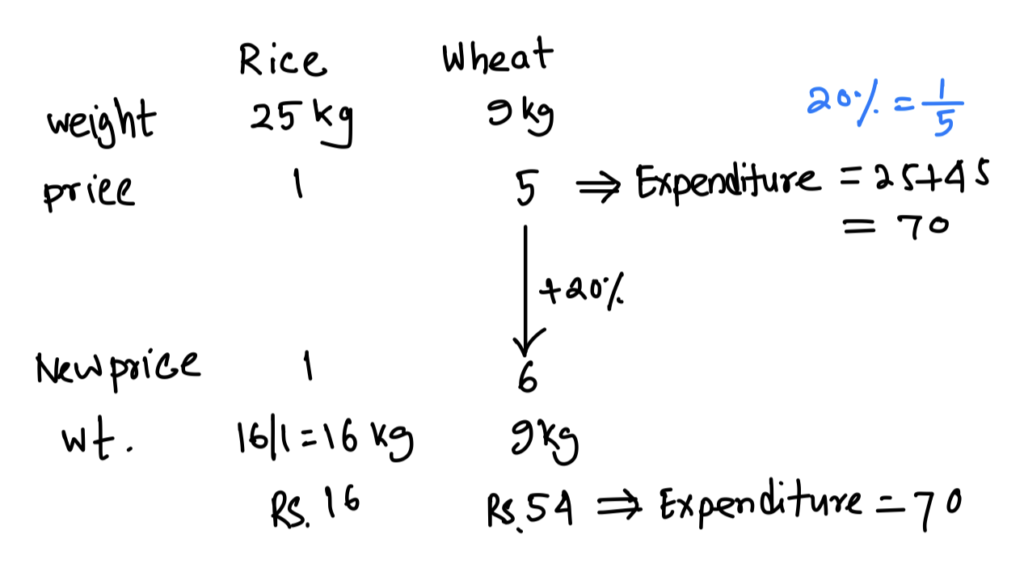Every month a man consumes 25 kg rice and 9 kg wheat. The price of rice is 20% of the price of wheat and thus he spends total Rs. 350 on the rice and wheat per month. If the price of wheat is increased by 20% then what is the percentage reduction of rice consumption for the same expenditure of Rs. 350? (Given that the price of rice and consumption of wheat is constant)
(a) 36%
(b) 25%
(c) 40%
(d) 24%
Ans: (a) 36%
Explanation:
20\% = \displaystyle\frac{1}{5}Let, Rice = 25 kg at ₹ x/kg
and wheat = 9 kg at ₹ 5x/kg
∴ 25x + 45x = 350
⇒ 70x = 350
⇒ x = 5
Hence, price of rice per kg = 5
and price of wheat per kg = 25
For new case,
Rice = y kg at ₹ 5/kg
Wheat = 9 kg at 25 × \displaystyle\frac{6}{5} = ₹ 30/kg
∴ 5y + 270 = 350
⇒ y = 16
Consumption of rice reduced from 25 kg to 16 kg.
Hence, reduction in consumption of rice
= \displaystyle\frac{25-16}{25} × 100 = 36%
Aliter(Ratio Method)

Hence, reduction in consumption of rice
= \displaystyle\frac{25-16}{25} × 100 = 36%
Explanation:
From the question we have understood that expenditure remain same.
Initial expenditure = 25 × 1 + 9 × 5 = 70
So, final expenditure will also be 70
Later expenditure on wheat = ₹ 54
So, rice will take = 70 – 54 = ₹ 16
Price of rice is still ₹ 1/kg
So, consumption of rice will be 16 kg

